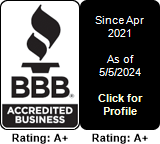Featured snippets are short blocks of text that appear above regular search results. They aim to provide a complete answer to a specific question. The content is taken from a page already indexed and selected because of how clearly it matches the phrasing and intent of the query.
There are four formats: paragraphs, lists, tables, and videos. Paragraphs work for definitions or brief explanations. Lists show steps or ranked items. Tables organize comparisons. Video snippets typically answer how-to questions and are sourced from platforms like YouTube. Each format responds to different user behaviors and query structures.
Appearing in a snippet can lead to higher visibility. It often places a page above all other results. This position may not always increase clicks, but it can improve recognition and reinforce trust for users scanning results quickly.
How Snippets Are Selected
The decision to show a snippet depends on how precisely a page responds to a query. A short, well-structured answer located directly under a related heading is more likely to be selected. The answer should match the question in tone and format.
Paragraph snippets perform best when the answer appears in 40 to 60 words. Sentence structure should be direct. Avoid background explanation or indirect phrasing. Lists and tables should be built with clean HTML. Use basic elements like <ol>, <ul>, and <table> so systems can read and extract data easily.
Context matters. If the rest of the page supports the main topic and reinforces the answer, it increases clarity. Focused content is easier to segment and reuse. Using clear headings, updated references, and structured sections contributes to overall stability.
Formatting Content for Different Snippet Types
Paragraph Snippets
Write a short paragraph that explains or defines something clearly. Use sentence structure that mirrors how the query might be asked. Place this paragraph just after a relevant heading.
Example:
A sitemap is a file that lists the pages of a website and helps search engines understand how they are connected.
Avoid general statements or long explanations. Keep language specific and consistent.
List Snippets
Use ordered lists for processes and unordered lists for item collections. Start with a heading that introduces the list in a way that matches the query. Limit each point to one short sentence.
Example: Steps to publish a blog post
- Log into the CMS
- Write the content
- Add headings and images
- Set the URL and meta tags
- Preview and publish
Avoid using styled paragraphs or visual list designs that rely on JavaScript. Clean HTML helps with extraction.
Table Snippets
Use tables for comparisons involving numbers, specs, or categories. Keep columns aligned and use consistent units. Headings should be clear, and the table should appear early in the content if it’s central to the topic.
Example:
| Plan | Monthly Cost | Includes Support |
|---|---|---|
| Basic | $29 | No |
| Standard | $59 | Yes |
| Premium | $99 | Yes |
Tables should serve a direct purpose. Avoid nested rows or excessive styling.
Video Snippets
These are selected from platforms like YouTube. Snippets typically highlight short videos that begin with direct answers. Use matching video titles, spoken phrasing that repeats the query, and timestamps in the description.
Embedding helpful videos on your page can support overall relevance, but doesn’t guarantee a video snippet for your site.
Identifying Snippet Opportunities
Start with a search. Enter a query and check if a snippet appears. If so, look at the structure. See how the heading is written and how the answer is presented.
Use SEO tools to filter queries that already rank within the top five. Review your content to see whether it has a direct match for the question. If it doesn’t, add one. Structure that section with a heading and a short paragraph or list underneath.
Long-tail keywords and question-style phrases often generate snippets. Words like “what,” “how,” “why,” and “which” indicate that a structured answer will be useful.
Mistakes That Reduce Visibility
1. Keyword Overuse
Repeating keywords makes the content harder to read. Use variations and focus on clarity.
2. Vague Language
Avoid phrases that require interpretation. Stick to direct answers.
3. Delayed Answers
If the response appears deep in the content, it may be missed. Provide answers early.
4. Complicated Formatting
Systems read basic HTML better than complex layouts. Avoid embedding answers in sliders, tabs, or scripts.
5. Mixing Topics
Stay focused. A page should address a specific subject, especially when answering a direct question.
Measuring Results
Track impressions, click-through rates, and average position using Search Console. Monitor whether a featured snippet appears for queries already bringing traffic to the page.
In GA4, check engagement metrics like scroll depth and time on page for sections rewritten with snippets in mind. These indicators help assess whether the structure improves performance.
Revisit target pages quarterly. Update outdated terms, fix formatting, and rewrite sections that do not reflect the user’s phrasing. Snippets change often, and regular review helps maintain alignment.
Conclusion
A page that answers a question clearly and briefly has a higher chance of being selected for a featured snippet. Position alone does not guarantee this outcome. Formatting, proximity to the heading, and precision in language matter more.
Identify high-performing pages where structure can be improved. Add question-based headings and short, specific responses. Focus on one purpose per section. This approach increases visibility and improves reading flow, even for users who never see the snippet itself.
15 FAQs on Featured Snippets and SEO Structure
1. Does a page need to rank first to appear in a snippet?
No. Pages ranked second or third often provide snippet content.
2. How long should a snippet paragraph be?
Keep it under 60 words, ideally between 250–300 characters.
3. Is HTML structure important?
Yes. Use semantic tags to make answers easier to extract.
4. Can one page contain multiple snippet answers?
Yes, if each is properly structured under distinct headings.
5. Are images used in snippets?
Sometimes, but most snippets are text-based.
6. Do I need schema markup?
Not for snippets, though schema helps with other SERP features.
7. What is the best heading format for a snippet?
Use direct, question-style headings such as “What is…” or “How does…”.
8. How often should I review snippet content?
Every three to six months, especially after algorithm updates.
9. Can FAQ sections trigger snippets?
Yes, especially for concise answers to common questions.
10. Are voice searches influenced by snippets?
Yes. Voice assistants often read snippets aloud.
11. Do snippets help with authority?
They improve visibility, which can strengthen perceived expertise.
12. What causes snippet loss?
Updates to competitor content, page quality, or freshness can shift selection.
13. Should I write pages just for snippets?
No. Snippet-friendly structure should support, not replace, good content.
14. Can ecommerce sites appear in snippets?
Yes. Tables and product comparisons often qualify.
15. Is snippet targeting useful if clicks are low?
It still improves presence and may assist brand recognition.


